Navigation
Install the app
How to install the app on iOS
Follow along with the video below to see how to install our site as a web app on your home screen.
Note: This feature may not be available in some browsers.
More options
Style variation
You are using an out of date browser. It may not display this or other websites correctly.
You should upgrade or use an alternative browser.
You should upgrade or use an alternative browser.
Damp sanding with a palm sander da...
- Thread starter Dan C
- Start date
Mike Phillips
Active member
- Dec 5, 2022
- 51,004
- 6
Traditionally a 1/16" was considered aggressive but now days 5/16" is considered aggressive and 3/16" and 3/32" would be considered finishing sanders.
I think Meguiar's changed this when they introduced thier Unigrit Sanding Discs to work with all the popular electric DA Polishers because they are all 5/16" orbit.
If you haven't read through my article on this topic, (not scanned but read), take a read-through as it's incredibly detailed.
Damp-Sanding Tools, Tips and Techniques by Mike Phillips
Here's an example from the article...
Meguiar's Unigrit Sanding Discs - 6"

Meguiar's Sanding Backing Plate #S6BP 6 inch
Back side
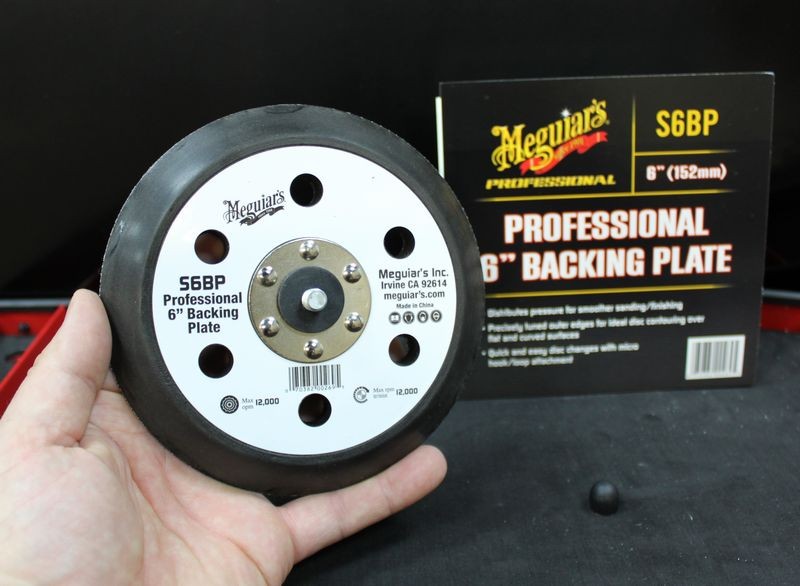
Working face side

Meguiar's Foam Interface Pad #S6FI 6 inch
Back side

Working face side

Approximately 1/2" thick

The backing plate attaches to the Free Floating Spindle Assembly
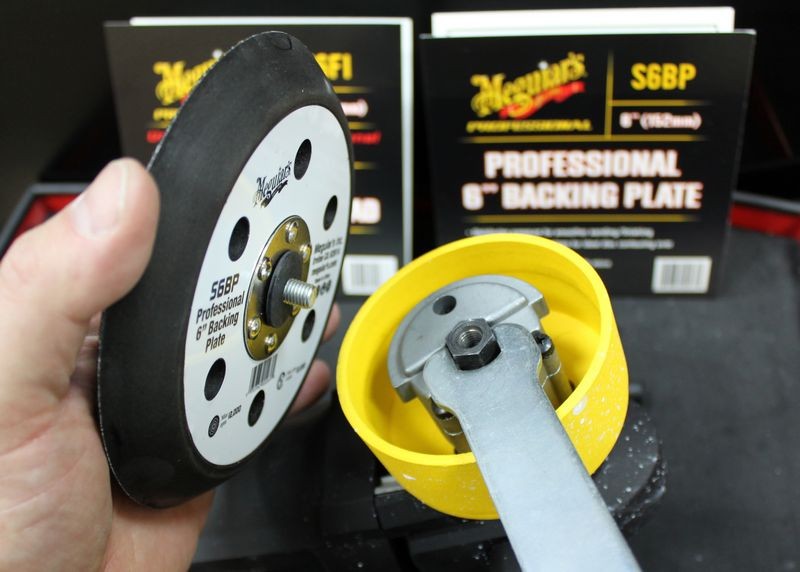
If you choose to use the interface pad, the "M" logo attaches to the face of the backing plate. The "M" side of the Interface pad has the "loop" material while the face of the backing plate has the "hook" material.
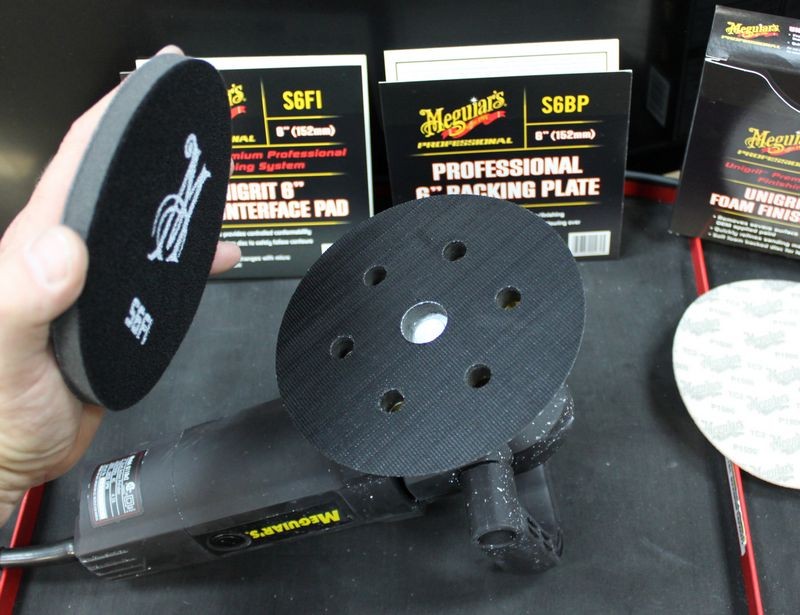
The loop backing on the back of the sanding disc attaches to the hooks on the face of either the interface pad or the backing plate.

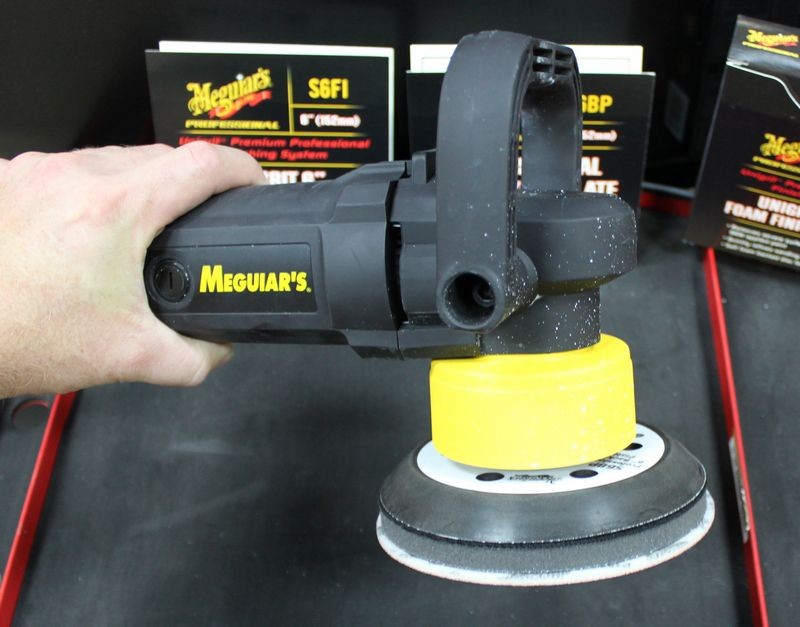
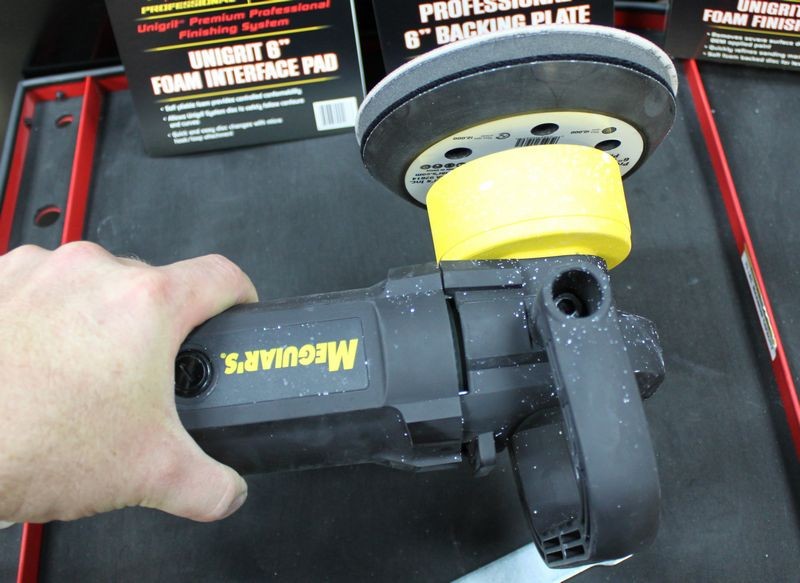
:xyxthumbs:
I think Meguiar's changed this when they introduced thier Unigrit Sanding Discs to work with all the popular electric DA Polishers because they are all 5/16" orbit.
If you haven't read through my article on this topic, (not scanned but read), take a read-through as it's incredibly detailed.
Damp-Sanding Tools, Tips and Techniques by Mike Phillips
Here's an example from the article...
Meguiar's Unigrit Sanding Discs - 6"

Meguiar's Sanding Backing Plate #S6BP 6 inch
Back side

Working face side

Meguiar's Foam Interface Pad #S6FI 6 inch
Back side

Working face side

Approximately 1/2" thick

The backing plate attaches to the Free Floating Spindle Assembly

If you choose to use the interface pad, the "M" logo attaches to the face of the backing plate. The "M" side of the Interface pad has the "loop" material while the face of the backing plate has the "hook" material.

The loop backing on the back of the sanding disc attaches to the hooks on the face of either the interface pad or the backing plate.



:xyxthumbs:
Mike Phillips
Active member
- Dec 5, 2022
- 51,004
- 6
What are you working on ?

- Thread starter
- #4
Traditionally a 1/16" was considered aggressive but now days 5/16" is considered aggressive and 3/16" and 3/32" would be considered finishing sanders.
I think Meguiar's changed this when they introduced thier Unigrit Sanding Discs to work with all the popular electric DA Polishers because they are all 5/16" orbit.
If you haven't read through my article on this topic, (not scanned but read), take a read-through as it's incredibly detailed.
Damp-Sanding Tools, Tips and Techniques by Mike Phillips
Here's an example from the article...
Meguiar's Unigrit Sanding Discs - 6"

Meguiar's Sanding Backing Plate #S6BP 6 inch
Back side

Working face side

Meguiar's Foam Interface Pad #S6FI 6 inch
Back side

Working face side

Approximately 1/2" thick

The backing plate attaches to the Free Floating Spindle Assembly

If you choose to use the interface pad, the "M" logo attaches to the face of the backing plate. The "M" side of the Interface pad has the "loop" material while the face of the backing plate has the "hook" material.

The loop backing on the back of the sanding disc attaches to the hooks on the face of either the interface pad or the backing plate.



You failed to mention what a palm sander with a 5/32" stroke would be considered...I assume a finish sander so if I am right would this be a better or worst choice then a sander with 3/32" orbit?
:xyxthumbs:
okWhat are you working on ?
Fresh applied clear coats!
